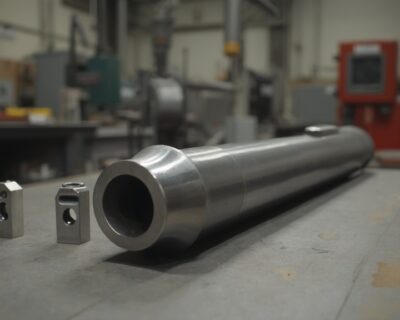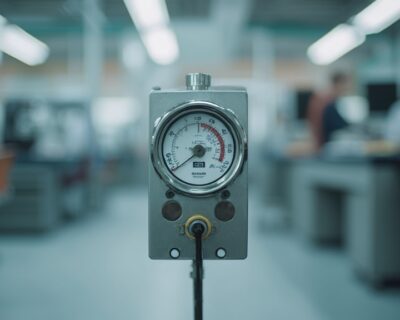Blogs

Exploring the Coefficient of Thermal Expansion Units in Material Science
Introduction
In the realm of material science and engineering, the coefficient of thermal expansion (CTE) emerges as a critical parameter, dictating how materials respond to temperature variations. This article delves into the multifaceted significance of CTE, exploring its impact on material behavior under thermal stress and its essential role in designing robust thermal management systems. From the construction of fire-resistant concrete structures to the development of advanced BaTiO3-based materials, understanding CTE is imperative for predicting and mitigating potential failures, thereby ensuring structural integrity and functionality.
The discussion extends to the various forms of thermal expansion—linear, area, and volume—each governed by specific coefficients crucial for material selection and engineering design. Accurate measurement techniques such as dilatometry and thermomechanical analysis are highlighted for their precision in determining CTE, enabling informed material selection and application decisions.
Furthermore, the article examines the pivotal role of CTE in industries like automotive, aerospace, and electronics, where material compatibility is key to preventing mechanical failure and enhancing product performance. Real-world applications underscore the importance of matching thermal expansion properties to ensure seamless integration and functionality.
Finally, the article addresses the challenges and future directions in predicting CTE under extreme conditions, emphasizing the development of new materials and innovative modeling approaches to enhance predictive accuracy. The exploration of multi-principal element alloys and advanced computational models signifies the ongoing quest to improve material performance in harsh environments.
Definition and Significance
The coefficient of temperature expansion (CTE) quantifies the extent to which a substance expands or contracts with temperature changes. This parameter is essential in material science, influencing how materials react under temperature stress. For instance, understanding CTE is essential for engineers designing fluid-based temperature management systems, as highlighted by Saeid Bayat and his co-authors in their work on optimization data for engineering designs. In their research, the examination of design optimization data offered valuable insights, assisting in the development of strong and dependable management systems. This is particularly important when considering the dynamic nature of the design industry, where new challenges continuously emerge.
CTE’s importance reaches multiple uses, from building concrete structures subjected to fire to the creation of innovative substances like the BaTiO3-based compound for medium temperature uses. The examination of these substances and their thermomechanical characteristics enables engineers to foresee and reduce possible failures caused by heat stress, ensuring structural integrity and functionality. For instance, in reinforced concrete (RC) beams, failure frequently happens on the tension side because of concrete cracking and steel bar yielding, occurrences that can be better controlled with a comprehensive understanding of heat-related properties.
The significance of CTE is also clear in the mechanical response of substances under combined effects of gravity, friction, and heat, as studied by E.E. Perepelkin and colleagues. ‘Their research into the dynamics of transverse oscillations of vertical rods underscores the importance of precise CTE measurements in predicting substance behavior under complex loading conditions.’.
In summary, the coefficient of heat increase is a crucial factor for engineers and designers. It enables the development of materials and structures that can withstand thermal stresses, thereby enhancing the reliability and performance of various applications in engineering and material science.

Types of Thermal Expansion
Thermal growth manifests in three primary forms: linear, area (superficial), and volume increase. ‘Linear growth pertains to one-dimensional changes in length, crucial for applications like steel beams in construction where precise length adjustments are vital.’. ‘Area enlargement, focusing on two-dimensional surface changes, is significant in scenarios such as the growth of metal plates used in various industrial applications.’. ‘Volume increase, involving three-dimensional alterations, is crucial when examining substances such as concrete, which is exposed to fire-induced spalling and necessitates thorough evaluation of its thermomechanical characteristics.’. Every kind of growth is regulated by particular factors that are essential for substance choice and engineering planning, guaranteeing constructions can endure heat stresses efficiently.

Measurement Techniques
Accurately determining the coefficient of thermal expansion (CTE) is essential for precise characterization of substances. Various advanced techniques such as dilatometry, interferometry, and thermomechanical analysis (TMA) are utilized for this purpose. These methods meticulously measure the dimensional changes substances undergo when exposed to controlled temperature variations. The accuracy of these techniques guarantees dependable CTE values, which are essential for informed selection and application decisions. For instance, research institutions like the University of Notre Dame, in collaboration with the Center for Bioanalytic Metrology, leverage such methods to push the boundaries of measurement science, thereby addressing industry-relevant challenges and advancing technological capabilities.

Applications and Considerations
The Coefficient of Thermal Expansion (CTE) is pivotal in industries such as automotive, aerospace, and electronics where compatibility of substances is crucial. In automotive applications, for instance, CTE considerations are integral during the development of mock-ups and full-scale prototypes. ‘Large format additive manufacturing (LFAM) is transforming this field by allowing the formation of substance layers that closely correspond to the expansion characteristics required for new vehicle designs, thereby ensuring smooth integration and performance.’.
‘In aerospace engineering, where temperature cycling is a constant challenge, the CTE of substances must align to avoid stress and fatigue that could lead to mechanical failure.’. The breakthrough research on carbon fiber composites, which can function as both structural components and energy storage, underscores the significance of precise CTE matching. These composites, with their dual functionality, reduce weight and enhance performance, making them ideal for aerospace applications where every gram counts.
Electronics also heavily depend on CTE compatibility, particularly in composite structures used in telecommunication equipment. Engineers must meticulously design components to withstand temperature cycling, as mismatched CTEs can lead to failure due to stress and deformation. This is illustrated in the temperature control of telecommunication devices, where maintaining the integrity and performance of substances under different temperatures is crucial.
Understanding and applying the principles of CTE are essential for engineers to design reliable and efficient components across these diverse industries. The accurate alignment of heat-related growth characteristics not only avoids mechanical breakdown but also improves the durability and functionality of the finished item.

Common Materials and Their CTE Values
Various substances demonstrate diverse coefficients of thermal expansion (CTE), an essential element in engineering applications. Steel, for instance, typically has a CTE of approximately 11-13 × 10⁻⁶/°C, while aluminum ranges from 22-24 × 10⁻⁶/°C. Comprehending these values is crucial in areas where substances are exposed to temperature variations, as mismatched CTE can result in serious problems like warping or structural collapse. This principle was notably demonstrated in a case study involving Siemens’ electric vehicle (EV) transfer case redesign. The project, directed by Aaron Frankel, VP of Additive Manufacturing, emphasized the significance of selection for performance and noise reduction. The exact regulation of heat growth was crucial in guaranteeing the transfer case fulfilled the strict operational standards of electric vehicles, which are recognized for their silent functioning and sensitivity to mechanical sound. This example demonstrates how the careful consideration of CTE in substances like steel and aluminum can drive success in advanced manufacturing applications.

Challenges and Future Directions
Even with considerable progress in measurement methods and substance science, precisely forecasting the coefficients of heat growth (CTE) under extreme conditions continues to be a lasting difficulty. Future research is essential in creating new substances with customized thermal expansion characteristics, enhancing predictive models, and improving our understanding of CTE in multi-component assemblies.
Multi-principal element alloys (MPEAs), composed of several elements in nearly equal proportions, are emerging as potential solutions for extreme environments due to their superior strength, hardness, and toughness across a range of temperatures. As Lisa Pogue emphasizes, conventional alloys like steel and aluminum face challenges under extreme heat, cold, and pressure, making the creation of strong substances essential for activities in severe conditions such as space and the Arctic.
Researchers are also concentrating on innovative modeling methods to forecast substance behavior more accurately. For instance, the technique developed by Li Ma and his team at APL, which predicts the microstructure formed during laser powder bed fusion (LPBF), showcases how physics-based computational modeling can forecast the mechanical properties of printed components. This method, as mentioned by Morgan Trexler, aims to speed up the development of resources for national security applications.
Furthermore, the steady demand for substances that retain their characteristics under extreme conditions is highlighted by the increasing activities in these environments. Enhancing the functional synthesizability of materials by focusing on the manufacturing process rather than intrinsic material properties could maximize outcomes and lead to more reliable, high-performance materials.
Conclusion
The coefficient of thermal expansion (CTE) serves as a cornerstone in material science and engineering, influencing how materials behave under thermal stress. Understanding CTE is essential for ensuring structural integrity in various applications, from fire-resistant concrete to advanced materials like BaTiO3. The ability to predict and mitigate potential failures is critical for engineers, particularly in dynamic design environments where challenges continuously evolve.
Thermal expansion manifests in three primary forms—linear, area, and volume—each governed by specific coefficients that are crucial for material selection. Accurate measurement techniques such as dilatometry and thermomechanical analysis are vital for determining CTE, enabling informed decisions in engineering design. These precision methods facilitate the development of materials and structures that can withstand thermal stresses, enhancing reliability across industries.
In sectors such as automotive, aerospace, and electronics, the compatibility of materials based on their CTE is paramount. Whether it involves creating lightweight carbon fiber composites for aerospace applications or ensuring the thermal stability of components in telecommunication equipment, the alignment of thermal expansion properties is essential to prevent mechanical failures and improve product performance.
As the field advances, challenges remain in predicting CTE under extreme conditions. The exploration of multi-principal element alloys and innovative modeling approaches signifies a commitment to developing materials that can perform reliably in harsh environments. Focusing on these advancements will not only enhance material performance but also drive innovation across various applications, ensuring that the future of engineering remains robust and resilient.




